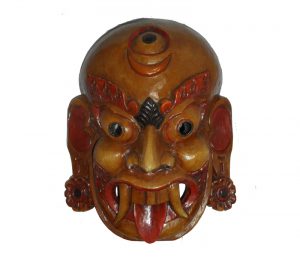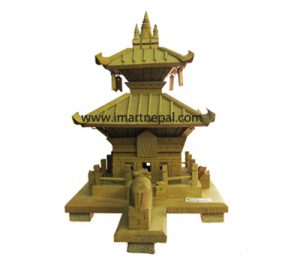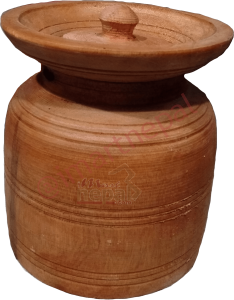WoodCrafts | History of Wooden Crafts in Nepal
Whenever I see the manifestation of all the Hindu Gods and Goddesses, Buddha and deities in the wood crafts, I make up my own assumptions of their creation. I believe that an artist wanted to express his imagination of the divine being into something tangible so that his fellow species could revere the faith instilled in that being. It may sound rather poetic.
But if we trace down the history of the wooden crafts, the oldest evidence goes back to Bavarians and Scandinavia who prepared hunting gears, coffin, and animals out of wood.
Also, the civilizations of Egyptians and Chinese practiced wooden craft too much extent which is depicted in the artistic tombs of pharaohs, and the wooden gates in Chinese palaces. If we talk about the wooden craft of Nepal, history dates back to the Licchavi period, when the famous Changunarayan temple was built with astonishing wooden artwork. Since then, with the rise and fall of different dynasties, Nepal has upheld its unique skill of craftsmanship.
Not much is known about how and when the wooden craft began in Nepal but one can correctly predict that it was the Licchavi period that started around the 4th century AD has played a distinctive and substantial role to shape the architecture of temples and buildings of Kathmandu valley and Nepal as a whole.
Also, the Malla period which started somewhere between the 12th and 13th centuries in Kathmandu helped to resurrect and modernize the Lichchavi architecture.
The prominent temple during the Licchavi period is the temple Changu Narayan which is located at Bhaktapur district and one can clearly get a glimpse of how woodcraft had played a major role in shaping the faith of then citizens to god.
One should always know that the idea of culture and the religious practice root from the ability to relate the god’s presence amid human souls and to portray gods in human form. So, the use of woods became prominent in making of any temples and the sacred building which would be bestowed by God’s presence. That’s why you can observe various gods and goddesses carved in the doors and windows of temples in Nepal.
If we take Changu Narayan to be the oldest temple of Nepal, the use of woods can be seen to carve the Hindu and Buddhist motifs and the demigods.
Later, during the Malla period, additional art is popularly known as “Tudal” started. Influenced by most of the Hindu temples in Northern India, the artisans of Nepal started to carve erotic art on the woods used in “Pagoda” style temples of Kathmandu.
Malla period further influenced the Newari population living in Kathmandu to embrace the then-popular architecture while building their homes. So, it can also be said that the culture of woodcraft slowly permeated and took hold in the Newari society. It was when Jayasthiti Malla, 14th century Malla king of unified Kathmandu valley created the caste system, a separate clan with the Newari society was given the job of woodcraft. Since then, the practice has been continued and transferred to generation.
So how have these astonishing woodcrafts come to life? My question was answered when I happen to visit different wooden workshops in Patan. Today there are few major wood crafts workshops in the country that haven’t let the quality of the goods taint over the years.
One of the artisans named Rajesh Barahi, who owns a small wood carving workshop in the vicinity of Patan Durbar Square explained to me the sequential process of creation of these crafts which include the selection of good wood, using the suitable tool to carve it, which highly depends upon the amount of description to be applied on the craft.
The color selection part is really tricky, he said since the texture of the craft holds a different aura. This delicate procedure made me ponder: why really do we need these items which are obviously not required for daily purpose? I hear the same questions from most of the people I’ve encountered so far. But if I may borrow the quote from George Orwell, “a society without beauty is soulless”. This explains the craving of humans, for these pieces of great beauty and aesthetic values.
Also, the true value of these crafts lies in their opposition to mass-production methods. Artists pay a lot of detail in the preparation of individual items which isn’t certainly an easy feat. Also, don’t you realize the shift in your mindset when you stand in awe watching the grandeur of art and craft of large halls in Patan Museum, the artistic rafters in the temples depicting obscure beauty?
Many psychologists have suggested the amazing healing property of interior designs of hospitals, and offices. Immense stress from the work and household can be relieved by just staring at a wooden frame clock or wooden statue of Buddha. The fact is, living in a beautified environment with a certain amount of individuality and beautiful objects add immeasurably to our enjoyment of life.






Leave a Reply